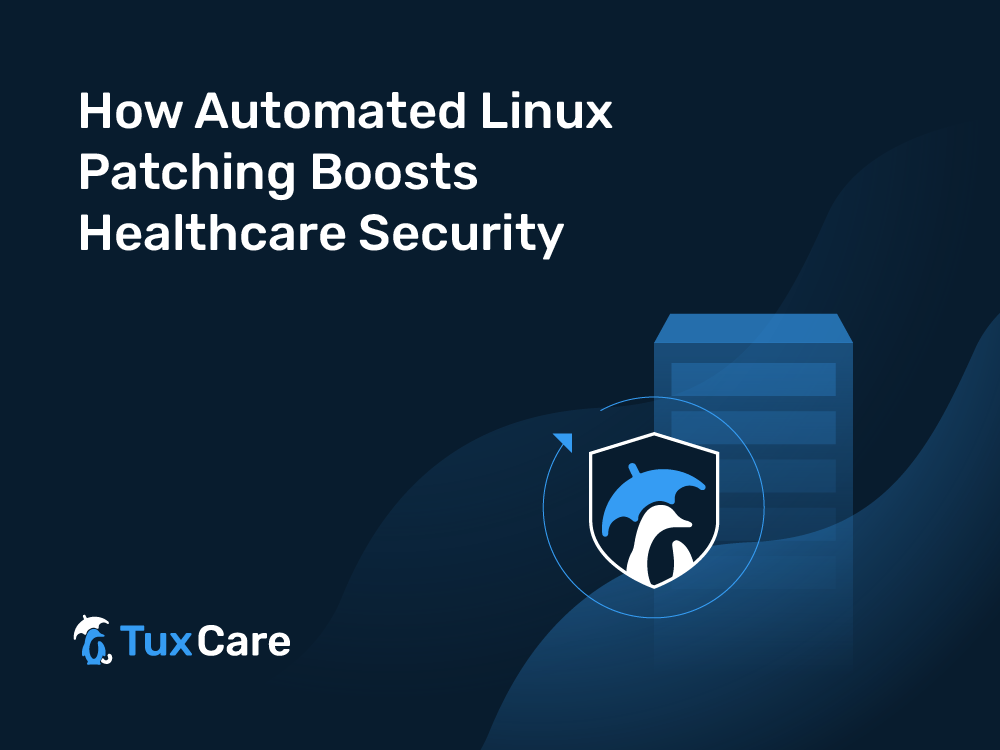How Automated Linux Patching Boosts Healthcare Security
- Healthcare organizations worldwide are facing a surge in cyberattacks.
- The healthcare industry is grappling with increasingly sophisticated cyberattacks, often exploiting known vulnerabilities that should have been addressed much earlier.
- Automated Linux patching helps ensure that systems are continuously updated with the latest security patches.
These days, healthcare organizations are increasingly relying on advanced technologies like electronic health records (EHRs), telemedicine platforms, and internet-connected medical devices (IoMT) to provide better care, streamline operations, and enhance patient outcomes. However, this digital transformation has come at a cost – healthcare organizations are now prime targets for cyberattacks.
Sensitive patient data and critical medical systems are at risk, making robust cybersecurity measures a non-negotiable priority. One crucial element of these measures is automated Linux patching. By proactively addressing vulnerabilities, this approach significantly strengthens the security posture of healthcare organizations relying on Linux-based systems.
The Growing Cyber Threat to Healthcare
Cyberattacks on healthcare organizations are a growing problem. 2023 witnessed a staggering number of healthcare data breaches, with 725 reported to the Department of Health and Human Services (HHS). According to the Emsisoft report, there were 46 hospital systems targeted, impacting at least 141 hospitals in 2023. Over two-thirds (32 out of 46) of attacks compromised sensitive information, including protected health information.
The consequences of such breaches are severe. They can lead to the theft of sensitive patient information, disruption of critical services, and significant financial losses. Healthcare data breaches are becoming a costly nightmare. The average cost per breach skyrocketed to $11 million in 2023, a staggering 53% increase since 2020, according to the Verizon Cost of a Data Breach Report. Additionally, the average ransom payment demanded by attackers jumped a mind-blowing 29,900% from $5,000 in 2022 to a staggering $1.5 million in 2023.
The Importance of Linux Patching in Healthcare
Linux serves as the backbone of many critical systems in healthcare. Many healthcare systems rely on Linux across various environments: Docker containers, on-premise servers, and cloud platforms. From Electronic Medical Record (EMR) applications to hospital management software, Linux plays a key role in delivering patient care. However, this widespread use also means that vulnerabilities in Linux systems can have far-reaching impacts.
Patching is the process of applying security updates to fix known vulnerabilities. Given the increasing sophistication of cyber threats, timely patching is crucial. Delays in patching can leave systems exposed, making them prime targets for attackers. The industry is grappling with increasingly sophisticated cyberattacks, often exploiting known vulnerabilities that should have been addressed much earlier.
For healthcare organizations, regular and timely patching is not just a best practice but a necessity. However, manual patching can be time consuming, often requiring system reboots and disrupting critical operations. This is where automated Linux patching steps in as a game-changer.
Benefits of Automated Linux Patching
Enhanced Security
Automated patching ensures that systems are continuously updated with the latest security patches. This significantly reduces the window of opportunity for attackers to exploit known vulnerabilities. By swiftly deploying patches after their release, automated patching lowers the risk of a successful cyberattack, safeguarding sensitive patient data and critical healthcare operations.
Minimized Downtime
In healthcare, system downtime might be a matter of life and death. Unlike traditional patching, automated live patching can be configured to apply updates without requiring system reboots or scheduled maintenance windows. This ensures critical healthcare services remain continuously available, safeguarding both patient care and operational efficiency.
TuxCare’s KernelCare Enterprise offers automated security patching for Linux systems without reboots or scheduled maintenance windows. TuxCare enables live patching for Linux kernels, shared libraries, virtualization platforms, and open-source databases.
Learn more about TuxCare’s automated live patching solutions.
Regulatory Compliance
Healthcare organizations are subject to various regulations that mandate the protection of patient data, including the Health Insurance Portability and Accountability Act (HIPAA) in the US and the General Data Protection Regulation (GDPR) in Europe. Automated Linux patching helps organizations meet these regulatory requirements by addressing vulnerabilities promptly and safeguarding systems from potential threats.
Operational Efficiency
Automated patching reduces the administrative burden on IT staff, allowing them to focus on more strategic tasks. Additionally, it removes human error associated with manual patching processes, ensuring a more reliable and consistent deployment of patches. This minimizes the risk of missing patches and potential security breaches.
Cost Savings
While implementing an automated patching solution requires an initial investment, it’s a wise decision that pays off significantly in the long run. Consider the potential costs of a cyberattack – data breaches, regulatory fines, and reputational damage can be financially crippling. For example, the Medibank data breach in 2022 has resulted in significant financial losses.
Implementing Automated Linux Patching in Healthcare
To effectively implement automated Linux patching, healthcare organizations should follow these steps:
Assessment and Planning: Start with a comprehensive assessment of your IT infrastructure. Identify critical systems that require automated patching for maximum security. Develop a patching plan that includes scheduling, monitoring, and rollback procedures in case of unforeseen issues.
Choosing the Right Patching Tools: Select automated patch management tools that are compatible with the organization’s Linux systems. KernelCare Enterprise supports all popular Linux distributions, including Ubuntu, Debian, RHEL, CentOS, AlmaLinux, Rocky Linux, Oracle Linux, CloudLinux, and more.
Configuration and Testing: Configure your automated patching solution to align with your organization’s specific needs and compliance requirements. Also, consider testing the system in a controlled environment to ensure it functions as expected.
Training and Awareness: Educate your IT staff and stakeholders about the benefits and procedures of automated patching. Continuous training ensures that the team stays informed about best practices and evolving threats.
Final Thoughts
As the healthcare landscape has become increasingly digital, adopting automated patching is not just a proactive measure but a necessary step. Automated Linux patching is a vital component of robust cybersecurity strategies for healthcare organizations relying on Linux-based systems. By ensuring timely and consistent application of security updates, healthcare organizations can significantly reduce their attack surface and protect sensitive patient data. This not only safeguards patient privacy but also ensures smooth operation and the continued delivery of high-quality care.
Have specific needs for your organization’s Linux patching strategy? Our Linux security experts offer customized advice. Ask a question and we’ll tailor solutions to fit your unique environment.



 Documentation
Documentation Login
Login




